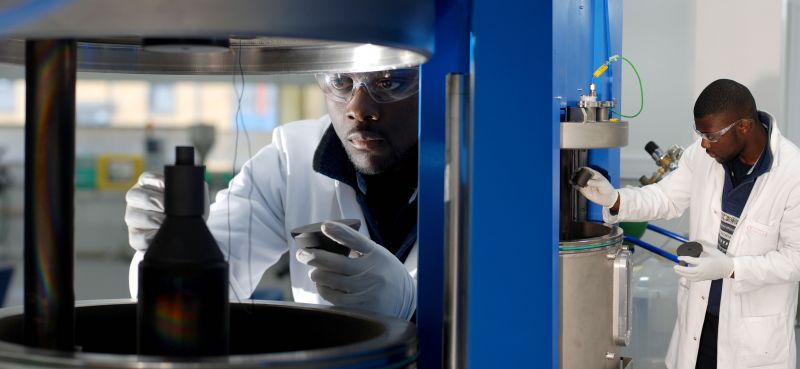Advanced Ceramics Processing
Spark Plasma Sintering (SPS) technology, a revolutionary high speed powder consolidation process
Nanoforce is pioneering the exploitation of Spark Plasma Sintering (SPS) technology in the UK. SPS can sinter ceramic, metal or composite powders to high density. This includes difficult systems to density, including ultra-high temperature and hardness carbides and borides, and refractory metal alloys.
The furnace works by the rapid heating of electrically conductive dies by pulsed DC electric currents in a vacuum or inert environment. It can achieve heating rate combined with high pressure (up to ~1GPa) opens up a new processing window and the possibility of producing new materials with microstructures and properties that cannot be achieved using conventional sintering technique.
SPS is a high-throughput technique, which makes it ideal for quickly exploring new materials and an energy-efficient route for the mass production of materials.
Using a SPS technique, nanopowders can be processed to produce high-density nanoceramics with minimal grain growth. It can also be used to produce novel materials such as ceramic-carbon nanotube composites, materials that combine different phase that would not normally coexist.
Nanoforce explores a various aspect of advanced ceramics processing and nanotechnology, focuses on improving technology transfer and commercialization.
Key research and development themes at Nanoforce are:
- Rapid sintering techniques to produce novel functional ceramics, composites and metal alloys
- Innovative processing routes for nanomaterials
- New ferroelectric ceramics for applications as high temperature piezoelectric sensors
- Nanostructured permanent magnetic materials for electric vehicle motor applications
- Textured ceramics processing in high magnetic fields
- Sintering and characterisation of recycled nanostructured magnetic powders
- Characterisation of the electromechanical properties of ferroelectric thin films
Applications of Advanced Ceramics produced at Nanoforce:
- Ceramic insulators in the electronics industry
- Backing materials or mounting brackets for electrical components
- Ceramic high-temperature super conductors, piezoelectric sensors and actuators
- Bioceramics with improved wear properties
- Ballistic protection for vehicle and body armour
- Flight mirror segments for the space shuttle


